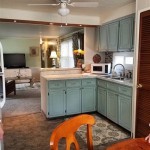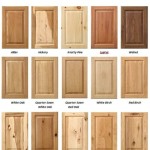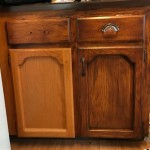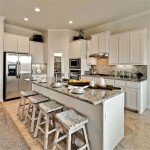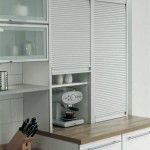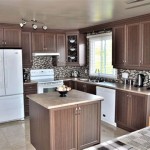```html
What's the Best Paint to Use on Kitchen Cupboards?
Selecting the optimal paint for kitchen cupboards necessitates a comprehensive understanding of the various options available, their respective properties, and how these attributes align with the intended aesthetic, durability requirements, and budgetary constraints. The kitchen environment presents unique challenges due to its susceptibility to moisture, grease, and frequent cleaning, making paint selection a critical factor in ensuring longevity and maintaining a visually appealing finish.
The primary objective is to choose a paint that can withstand the demanding conditions of a kitchen while providing a hard, durable, and easily cleanable surface. This involves considering factors such as adhesion, resistance to scratches and stains, ease of application, and the overall finish. Furthermore, the type of material the cupboards are made from (e.g., wood, laminate, metal) significantly influences the choice of primer and paint.
Understanding Paint Types for Kitchen Cupboards
Several types of paint are commonly used on kitchen cupboards, each possessing distinct advantages and disadvantages. These include oil-based paints, latex-based paints, acrylic-based paints, and specialized enamel paints specifically designed for cabinetry.
Oil-based paints are known for their exceptional durability and resistance to scratches and chipping. They provide a smooth, porcelain-like finish that is highly resistant to moisture and stains. However, oil-based paints have a longer drying time compared to latex paints and require mineral spirits for cleanup. They also emit higher levels of volatile organic compounds (VOCs), which can be a concern for indoor air quality.
Latex-based paints are a popular choice due to their ease of application, low odor, and quick drying time. They are water-based, making cleanup simple with soap and water. Latex paints are also more flexible than oil-based paints, which helps prevent cracking and peeling. However, they may not be as durable or stain-resistant as oil-based paints, especially in high-traffic areas like kitchens. High-quality latex paints formulated for trim and cabinetry can offer improved durability and performance.
Acrylic-based paints offer a good balance of durability, ease of application, and low VOC content. They are water-based and clean up easily with soap and water. Acrylic paints provide excellent adhesion to a variety of surfaces and are resistant to fading and yellowing over time. They are a suitable option for kitchen cupboards, particularly when a durable and long-lasting finish is desired.
Enamel paints are specifically formulated for hard-wearing finishes, making them an excellent choice for kitchen cabinets. They create a hard, glossy, and durable surface that is resistant to scratches, chips, and stains. Enamel paints are available in both oil-based and water-based formulations, allowing for greater flexibility in terms of application and cleanup. Water-based enamel paints combine the durability of enamel with the ease of use of latex, offering a practical solution for kitchen cabinet painting.
Key Considerations for Paint Selection
Beyond the type of paint, several other factors should influence the selection process. These include the sheen of the paint, the type of primer used, the surface preparation required, and the specific properties of the paint itself.
Paint Sheen: The sheen of the paint affects its appearance, durability, and cleanability. Different sheens range from matte to high-gloss, each offering a unique aesthetic and performance profile. Matte finishes are non-reflective and tend to hide imperfections but are more difficult to clean. Satin and eggshell finishes offer a subtle sheen and are more durable and easier to clean than matte. Semi-gloss and high-gloss finishes are highly reflective and provide the most durable and cleanable surfaces, making them ideal for kitchen cabinets that are subjected to frequent cleaning and exposure to moisture.
Primer Selection: Proper priming is essential for ensuring optimal adhesion and a uniform finish, especially on surfaces that are previously painted or have a glossy finish. Primers create a smooth, even surface for the paint to adhere to and help block stains and tannins from bleeding through. Oil-based primers are excellent for blocking stains and providing a durable base coat, while latex primers are easier to apply and clean up. Specialized primers designed for use on laminate or metal surfaces are necessary to ensure proper adhesion to these non-porous materials.
Surface Preparation: Thorough surface preparation is crucial for achieving a professional-looking and long-lasting paint job. This involves cleaning the cupboards to remove grease, dirt, and grime, sanding the surfaces to create a smooth and even texture, and filling any holes or imperfections with wood filler or spackle. Properly prepared surfaces allow the paint to adhere better and prevent peeling or chipping.
Paint Properties: Specific paint properties, such as self-leveling capabilities, UV resistance, and mold resistance, should also be considered. Self-leveling paints help to minimize brushstrokes and create a smoother, more even finish. UV-resistant paints prevent fading and discoloration over time, especially in areas exposed to sunlight. Mold-resistant paints are essential in kitchens due to the high humidity levels and can help prevent the growth of mold and mildew.
Application Techniques and Best Practices
The application technique plays a significant role in the final outcome of the paint job. Using the correct tools and following best practices can help ensure a smooth, even, and durable finish.
Tools and Equipment: Essential tools for painting kitchen cupboards include high-quality paintbrushes, rollers, paint trays, painter's tape, sanding blocks, and drop cloths. Using high-quality brushes and rollers will help to achieve a smoother, more even finish with fewer brushstrokes or roller marks. Painter's tape is used to protect adjacent surfaces and create clean lines. Sanding blocks are used to smooth surfaces and prepare them for painting. Drop cloths protect floors and other surfaces from paint splatters.
Application Techniques: Applying thin, even coats of paint is crucial for achieving a professional-looking finish. Avoid applying too much paint at once, as this can lead to drips, runs, and uneven drying. Allow each coat of paint to dry completely before applying the next coat. Sanding lightly between coats can help to create a smoother surface and improve adhesion.
Spraying vs. Brushing/Rolling: While brushing and rolling are common application methods, spraying can provide a smoother, more even finish, especially on detailed surfaces. Using a paint sprayer requires more preparation and skill but can result in a professional-looking finish with minimal brushstrokes. However, it is essential to use a proper spray booth or ventilation system to prevent overspray and ensure proper air circulation.
Drying and Curing Times: Adhering to the recommended drying and curing times for the chosen paint is critical for achieving optimal durability and performance. Allowing the paint to dry completely between coats and to fully cure before subjecting the cupboards to heavy use will help to ensure a long-lasting and durable finish. Consult the paint manufacturer's instructions for specific drying and curing times.
In summary, selecting the best paint for kitchen cupboards involves evaluating several factors, including the type of paint, the sheen, the primer, the surface preparation, and the application technique. By carefully considering these elements and choosing the right combination of products and methods, it is possible to achieve a beautiful, durable, and long-lasting finish on kitchen cabinets that will enhance the overall appearance and functionality of the kitchen.
```
What Is The Best Paint For Kitchen Cabinets Heritage Custom Painting

How To Paint Kitchen Cabinets In 7 Simple Steps

Best Paint Color For Kitchen Cabinets

What Is The Best Paint To Use On Kitchen Cabinets

How To Paint Kitchen Cabinets Best Color Ideas Cost

Cabinet Refacing Vs Painting Which Is Right For You

How To Paint Kitchen Cabinets In 7 Simple Steps

How To Paint Kitchen Cabinets In Four Easy Steps For An Unbeatable Finish Express Co

Best Paint For Kitchen Cabinets 24 Brands Blind Tested 2024

What Is The Best Paint To Use For Kitchen Cabinets Mayfair

